MEA Aramid Fibers Market Size
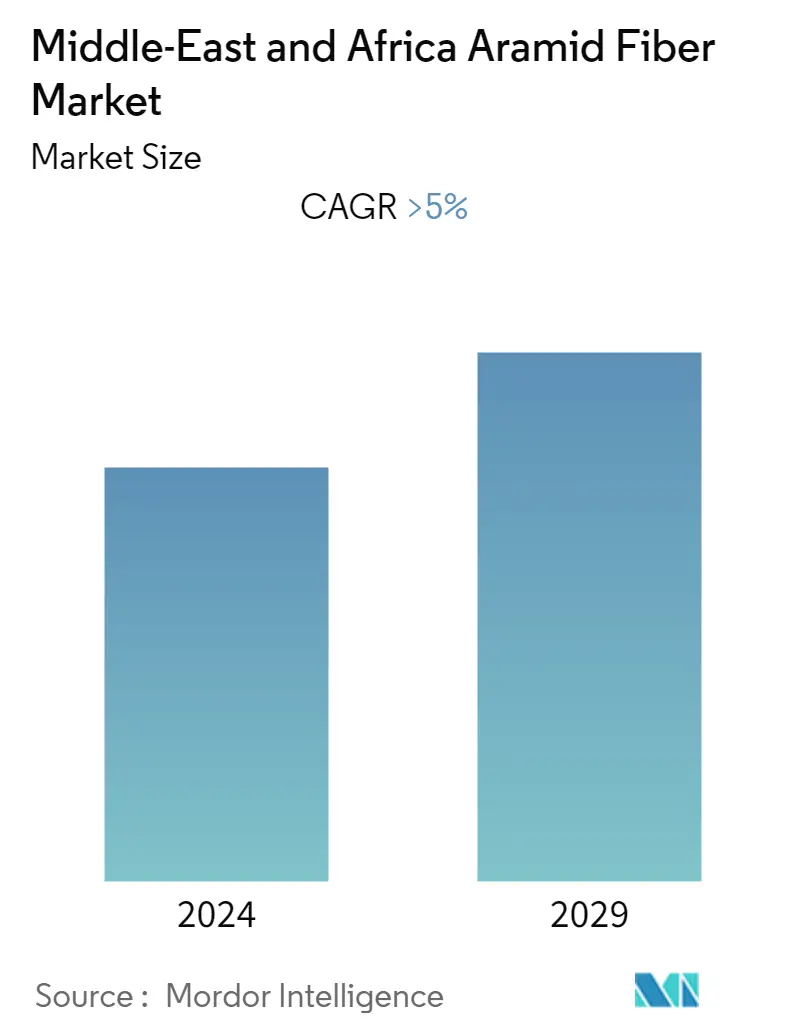
| Study Period | 2018 - 2028 |
| Base Year For Estimation | 2021 |
| Forecast Data Period | 2024 - 2028 |
| Historical Data Period | 2018 - 2020 |
| CAGR | > 5.00 % |
| Market Concentration | High |
Major Players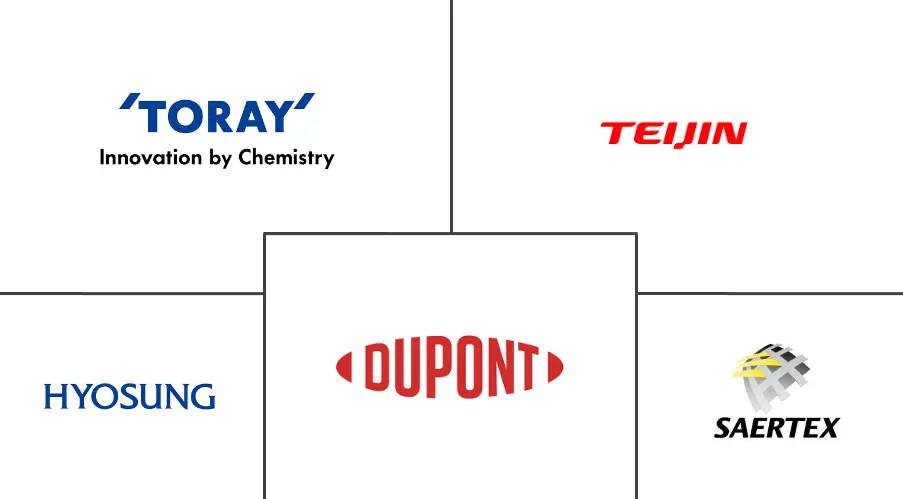
*Disclaimer: Major Players sorted in no particular order |
Need a report that reflects how COVID-19 has impacted this market and its growth?
MEA Aramid Fibers Market Analysis
The Middle-East and Africa aramid fiber market is estimated to witness a significant growth, at an estimated CAGR of around 5%, over the forecast period. Major factor driving the market studied is the growing need for fuel efficiency. On the flipside, the availability of alternatives with better properties is expected to hinder the growth of the market studied.
- The aerospace and defense sector dominated the aramid fibers market and is expected to grow at a fastest rate during the forecast period.
- Emerging applications in the optical fiber industry are likely to act as an opportunity in the future.
- Saudi Arabia accounted for the largest market share and is expected to continue domination during the forecast period.
MEA Aramid Fibers Market Trends
This section covers the major market trends shaping the MEA Aramid Fibers Market according to our research experts:
Aerospace and Defence Sector Dominated the Market
- Aramids are used for both components and structural applications, in all aircraft and spacecraft, ranging from hot air balloons, gliders, etc., to fighter planes, passenger airliners, and space shuttles. Applications of aramid fibers are generally in wing assemblies, helicopter rotor blades, seat propellers, and enclosures for instruments and internal parts.
- With ever-increasing fuel costs and environmental lobbying, commercial flying is under constant pressure to improve performance, and weight reduction is a key factor in the equation. Aramid fiber presented a solution to this equation as it is lightweight and promotes fuel efficiency. Other positive attributes include excellent fatigue and corrosion resistance and good impact resistance.
- Every year, the aerospace industry uses a higher proportion of aramid fibers in the construction of each new generation of aircraft due to the provision of an all-weather operation of commercial aircraft and enhanced vision systems. Moreover, characteristics, such as temperature stability and durability, will further fuel the growth of the aerospace composites market over the coming years.
- With the increasing security concerns and increasing commercial use of aircraft as a medium of conveyance, the demand for aircraft has been increasing across the region. With this, various aircraft production orders have been lined up for delivery in the coming years.
- Hence, with the production of aircraft to deliver the aircraft orders from the defense as well as the aviation industry, the demand for aramid fiber is projected to increase in the region, during the forecast period.
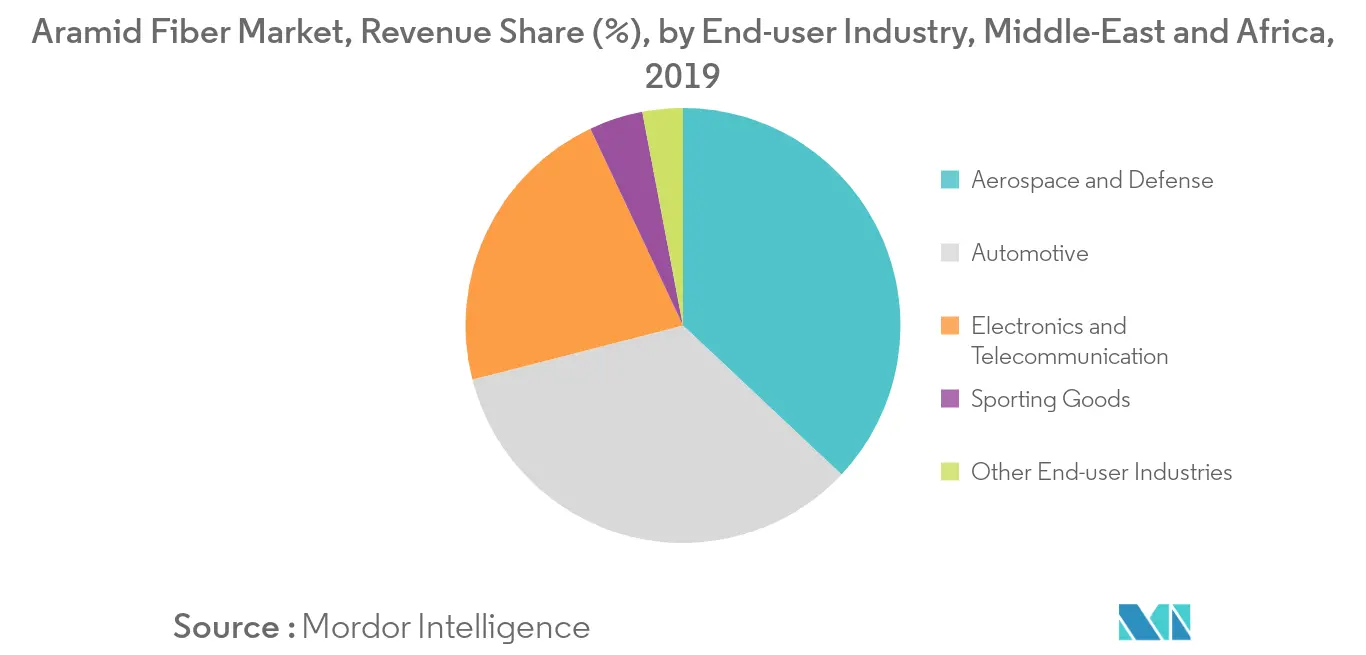
Saudi Arabia to Dominate the Market
- Infrastructure development and technological advances are primarily being focused by the Saudi Arabian aerospace industry to smoothen the market entry for multinational players into the country.
- Almost 60% of the total aircraft parts imported by Saudi Arabia are from the United States. Most of the aircrafts used in the Saudi Arabia defense sector are also manufactured in the United States and require timely MRO services. This provides an opportunity for the US manufacturers to enter the Saudi Arabia aerospace MRO market, and also provides a growth opportunity for the aramid fiber, which is used in the aerospace industry.
- Major players, such as Bombardier, Bell, Cessna, and Rockwell Collins have entered the Saudi Arabia aerospace sector and many other players have been entering the market by means of joint ventures with the domestic companies.
- The other major end-user industry is automotive. Saudi Arabia is focusing on establishing itself as the new automotive hub in the Middle East. Though the country is a large importer of vehicles and auto parts, it is now trying to attract original equipment manufacturers (OEMs) to open their production plants in the country to develop the domestic automotive industry.
- Furthermore, the country is experiencing a steady growth in new car sales, with the market expecting to reach one million units by 2020, growing at a rate of 6.7% per annum.
- Overall, with the growing demand from various end-user industries is projected to drive the market in the country during the forecast period.
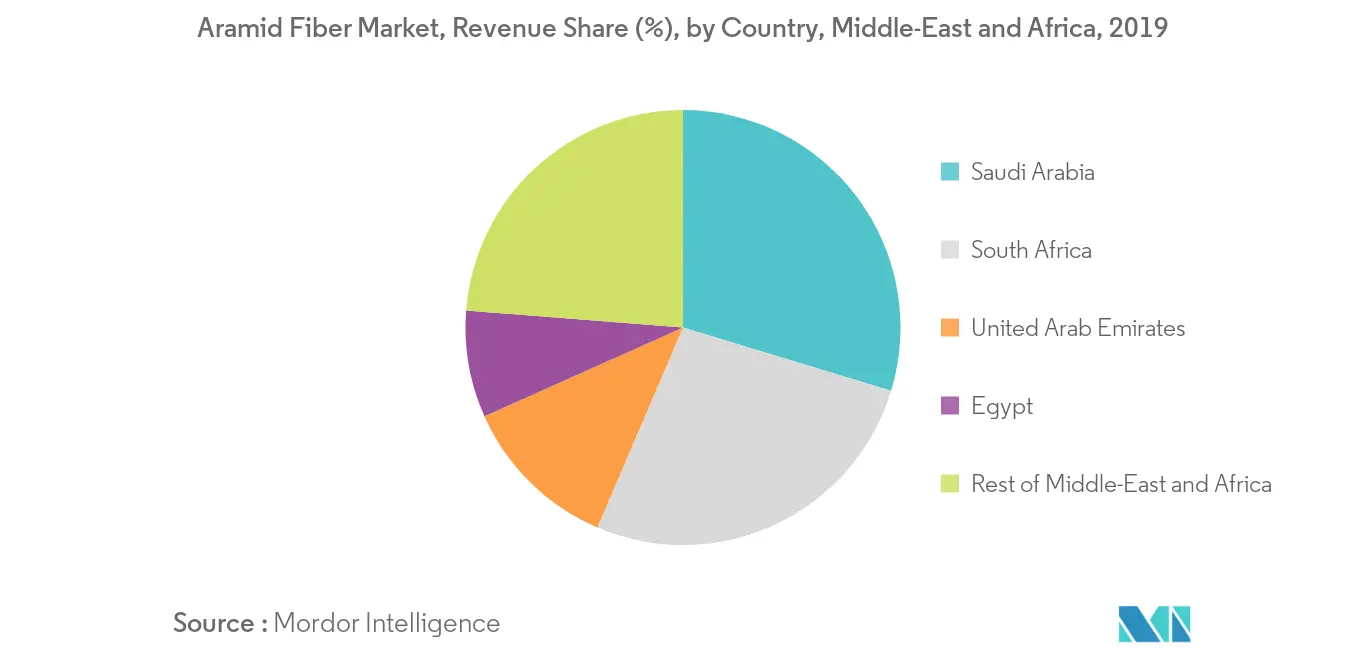
MEA Aramid Fibers Industry Overview
The Middle-East and Africa aramid fiber market is highly consolidated. The major companies include Teijin Aramid B.V., Dupont, HYOSUNG, and TORAY INDUSTRIES, INC., among others.
MEA Aramid Fibers Market Leaders
Teijin Aramid B.V.
Dupont
HYOSUNG
TORAY INDUSTRIES, INC.
*Disclaimer: Major Players sorted in no particular order
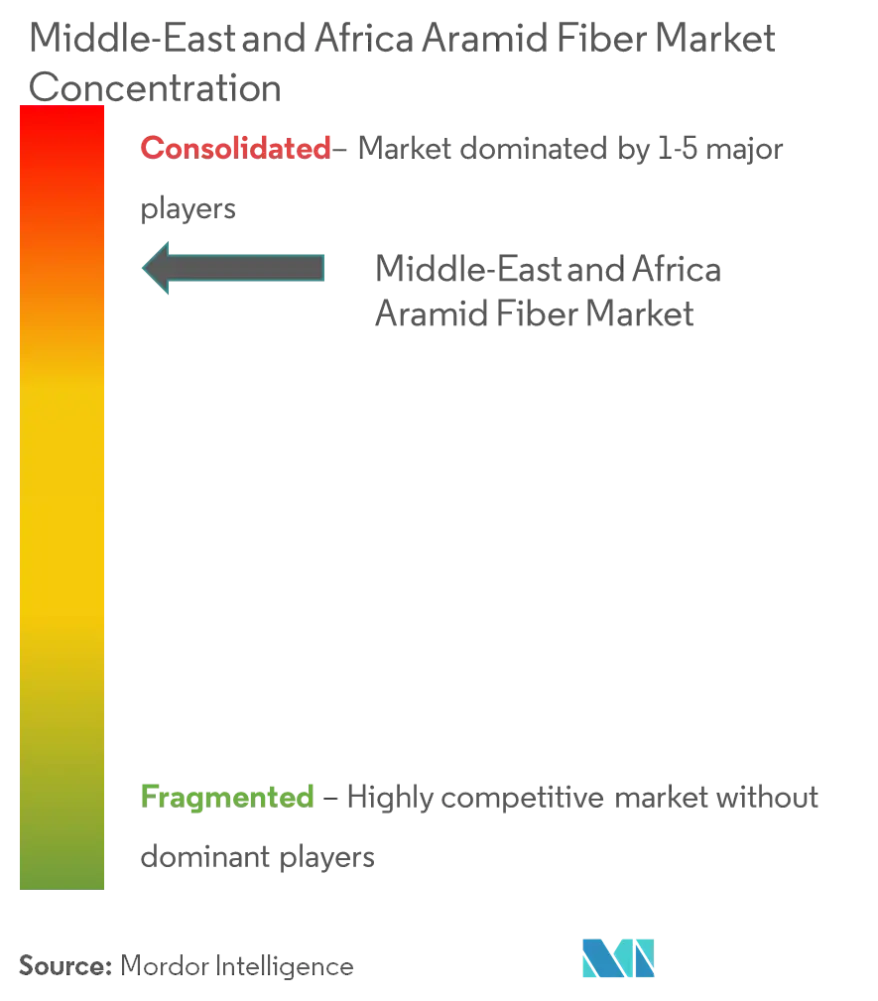
MEA Aramid Fibers Market Report - Table of Contents
-
1. INTRODUCTION
-
1.1 Study Assumptions
-
1.2 Scope of the Study
-
-
2. RESEARCH METHODOLOGY
-
3. EXECUTIVE SUMMARY
-
4. MARKET DYNAMICS
-
4.1 Drivers
-
4.1.1 Growing Need for Fuel Efficiency
-
4.1.2 Other Drivers
-
-
4.2 Restraints
-
4.2.1 Available Alternatives with Better Properties
-
4.2.2 Other Restraints
-
-
4.3 Industry Value-Chain Analysis
-
4.4 Porter's Five Forces Analysis
-
4.4.1 Bargaining Power of Suppliers
-
4.4.2 Bargaining Power of Consumers
-
4.4.3 Threat of New Entrants
-
4.4.4 Threat of Substitute Products and Services
-
4.4.5 Degree of Competition
-
-
-
5. MARKET SEGMENTATION
-
5.1 Product Type
-
5.1.1 Para-aramid
-
5.1.2 Meta-aramid
-
-
5.2 End-user Industry
-
5.2.1 Aerospace and Defense
-
5.2.2 Automotive
-
5.2.3 Electronics and Telecommunication
-
5.2.4 Sporting Goods
-
5.2.5 Other End-user Industries
-
-
5.3 Geography
-
5.3.1 Saudi Arabia
-
5.3.2 South Africa
-
5.3.3 United Arab Emirates
-
5.3.4 Egypt
-
5.3.5 Rest of Middle-East and Africa
-
-
-
6. COMPETITIVE LANDSCAPE
-
6.1 Mergers & Acquisitions, Joint Ventures, Collaborations, and Agreements
-
6.2 Market Share Analysis**
-
6.3 Strategies Adopted by Leading Players
-
6.4 Company Profiles
-
6.4.1 Advanced Materials Technology (Pty) Ltd
-
6.4.2 Dupont
-
6.4.3 HYOSUNG
-
6.4.4 SAERTEX Group
-
6.4.5 Tango Engineering
-
6.4.6 Teijin Aramid B.V.
-
6.4.7 TORAY INDUSTRIES, INC.
-
6.4.8 YF International bv
-
- *List Not Exhaustive
-
-
7. MARKET OPPORTUNITIES AND FUTURE TRENDS
-
7.1 Growing Demand from the Aerospace Sector
-
7.2 Emerging Applications in the Optical Fiber Industry
-
MEA Aramid Fibers Industry Segmentation
The Middle-East and Africa aramid fiber market report includes:
| Product Type | |
| Para-aramid | |
| Meta-aramid |
| End-user Industry | |
| Aerospace and Defense | |
| Automotive | |
| Electronics and Telecommunication | |
| Sporting Goods | |
| Other End-user Industries |
| Geography | |
| Saudi Arabia | |
| South Africa | |
| United Arab Emirates | |
| Egypt | |
| Rest of Middle-East and Africa |
MEA Aramid Fibers Market Research FAQs
What is the current Middle-East and Africa Aramid Fiber Market size?
The Middle-East and Africa Aramid Fiber Market is projected to register a CAGR of greater than 5% during the forecast period (2023-2028).
Who are the key players in Middle-East and Africa Aramid Fiber Market?
Teijin Aramid B.V., Dupont, HYOSUNG and TORAY INDUSTRIES, INC. are the major companies operating in the Middle-East and Africa Aramid Fiber Market.
Middle-East and Africa Aramid Fiber Industry Report
Statistics for the 2023 Middle-East and Africa Aramid Fiber market share, size and revenue growth rate, created by Mordor Intelligence™ Industry Reports. Middle-East and Africa Aramid Fiber analysis includes a market forecast outlook to 2028 and historical overview. Get a sample of this industry analysis as a free report PDF download.
